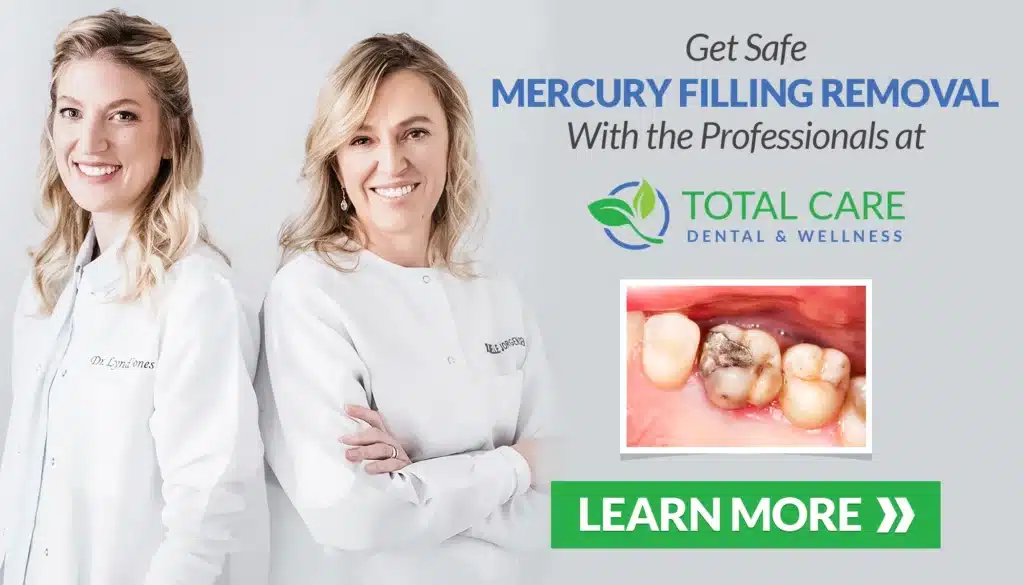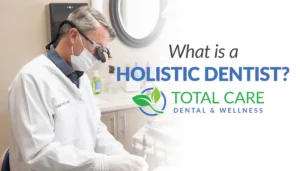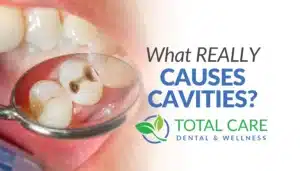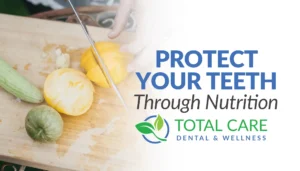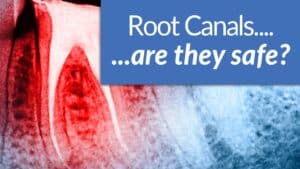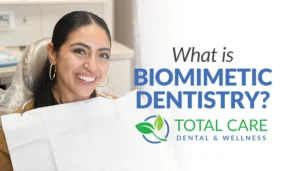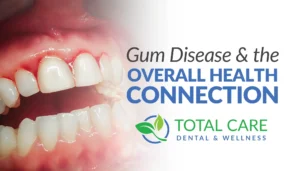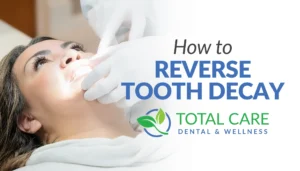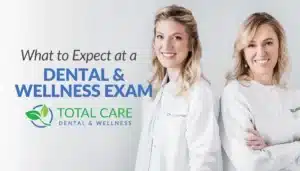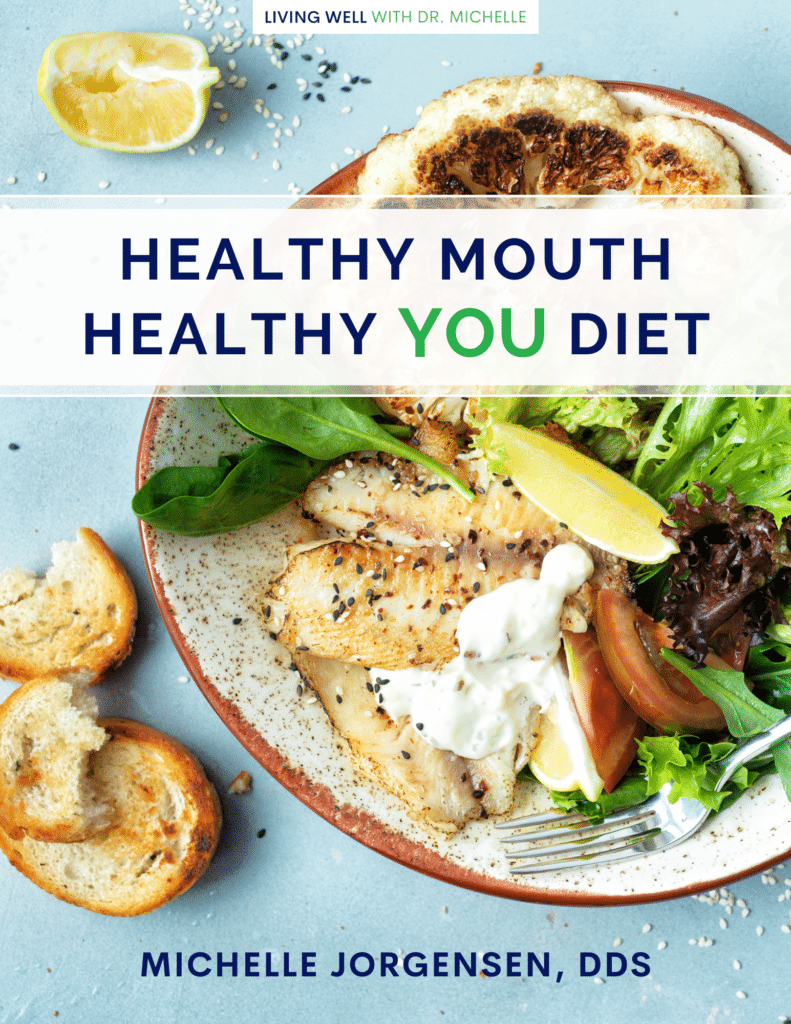chapter
The Dangers of Dental Amalgam Fillings
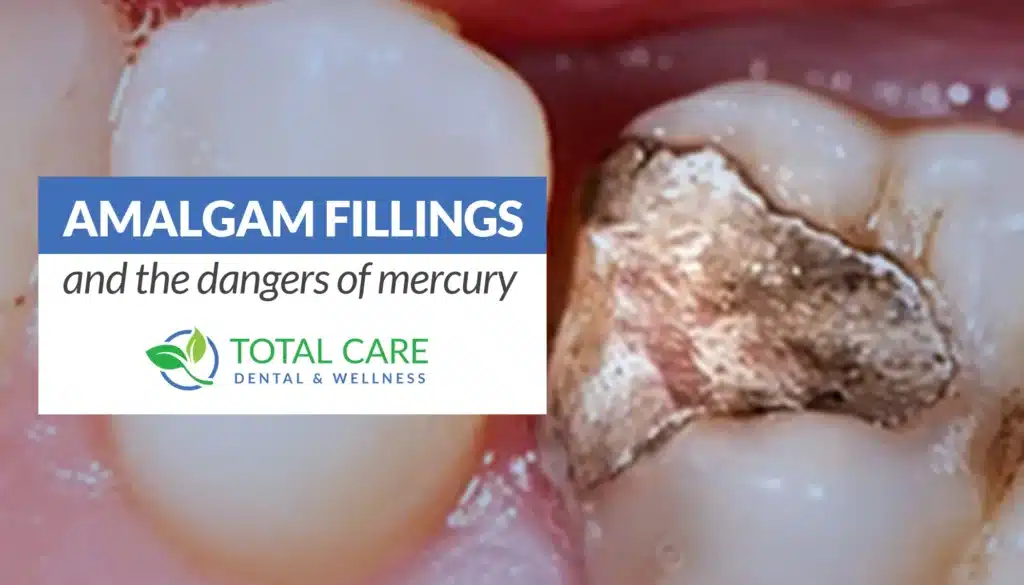
Over the years, concerns have been raised about the use of dental amalgam fillings (commonly used to fill cavities) because they contain mercury.
In this chapter, we dive deep into the debate surrounding “silver amalgam” fillings (or dental amalgam restorations) and explain just why the handling of mercury is dangerous for you and your dentist.
There is Mercury in Dental Amalgam Fillings?!
That’s right. The first mercury dental filling material was made in France in 1816. Elemental mercury mixed with shavings from silver coins formed a soft paste that could easily be packed into a hole with tooth decay. It took a few minutes to turn hard, leaving enough time to shape and fit the tooth. It was introduced to the United States in 1830 and became an instant success because it was so inexpensive and easy to use.
That first filling material was 50% mercury (liquid shiny stuff in thermometers) and 50% silver.
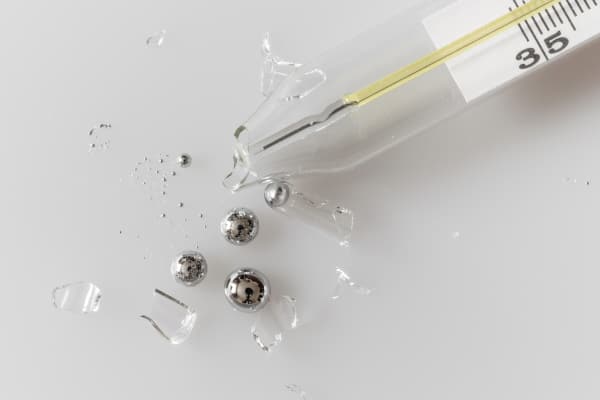
In fact, 50% of those “silver” fillings today and 150 years ago, are mercury, despite it being common knowledge that mercury is one of the most deadly metals on the planet.
If we remove a mercury filling today, the EPA tells us we have to treat that piece of filling like a toxic substance.
If you break a mercury-containing thermometer, there are nine intense steps you are to take to collect and dispose of the mercury, including calling the fire department to dispose of it.
Yet, you might be surprised how few dentists really take mercury handling this seriously…
When talking to a 2011 dental graduate, he said that he didn’t know mercury vapors could be a problem for patients or dentists!
He graduated at a time when everyone was taught to routinely place mercury fillings…
…this is not new information…
…yet the dental community at large has proven that old habits die hard.
How Mercury Amalgam Fillings Created the “Mad Hatter”
When mercury fillings were first introduced, most dentistry was performed by barber dentists.
(At one time barbers also performed dental surgery, earning them the name barber-surgeon or barber dentist.)
Barber-dentists loved these new fillings – They were easy to place, and they could make money on them.
The few doctors who did dentistry at that time were not so excited about it. They knew the symptoms of exposure to mercury from watching hat makers. (The hat makers would use mercury to turn fur into felt.)
After repeated exposure to mercury, the hat makers started showing bizarre behavior due to mercury poisoning. This is where the term “mad hatter” character from Alice in Wonderland comes from. The mercury quite literally was making them crazy due to the mercury levels in their body!
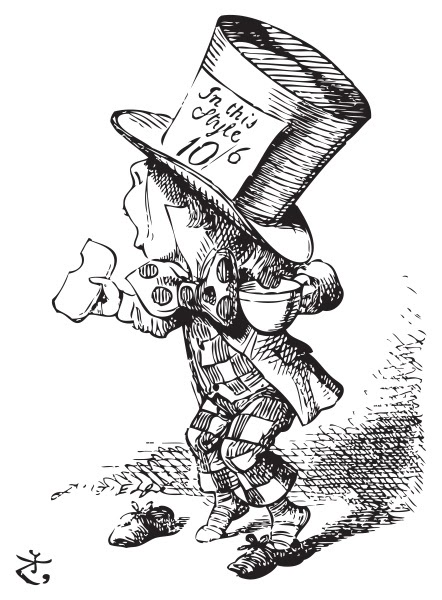
Doctors were concerned that mercury was being placed into teeth…
…but the barbers continued placing them. They were making money on these easy fillings. Mercury/silver fillings were here to stay.
Mercury is Classified as Toxic Material
Mercury fillings are still being used today in nearly 50% of dental offices in the US, all without regulation of any kind – not even a minimum age limit!
The American Dental Association (ADA) was sued years ago on this issue and they stated that they had no duty to the public regarding amalgam fillings…
…because the dentist “manufactures” the filling at the time of use, making the dentist the responsible party.
Now imagine this: if the Food And Drug Administration (FDA) changed its classification of mercury fillings…
…declaring them unsafe for use…
…every person who has had dental amalgams placed by dental professionals in the US could join a class-action lawsuit against dentists who have ever placed mercury fillings!
However, the way our government and judicial systems are set up, there is no way the governing agencies will change their stance on this.
Facts About Mercury:
10% of global mercury consumption is used in tooth fillings
32+ tons of mercury are used in dentistry annually worldwide
76% of Americans don’t know that mercury is the primary component of “silver” amalgam fillings
3.7 tons of mercury are discharged each year to Public Owned Treatment Works by dentists
Controversy About Mercury Fillings
The safety of mercury fillings continues to be a very controversial subject. Dental professionals have lost their dental licenses for speaking out about their beliefs that mercury fillings are toxic…
In fact, there are things I can and can’t legally say to you about mercury in fillings.
Thankfully, there are some undisputed facts that not even current proponents of mercury fillings can deny:
Mercury is the most neurotoxic, non-radioactive element on the planet. It is more neurotoxic than arsenic or lead.
Dental researchers now concede that mercury vapor is released from unstimulated amalgam fillings 24 hours a day.
Chewing, brushing, temperature increases, and clenching/grinding have been shown to release mercury vapor.
If the above statements weren’t enough to cause concern, here’s the 2005 report on mercury from the World Health Organization:
“It may cause harmful effects to the nervous, digestive, respiratory, immune systems, and to the kidneys, besides causing lung damage.
Adverse health effects from mercury exposure can be tremors, impaired vision and hearing, paralysis, insomnia, emotional instability, developmental deficits during fetal development, and attention deficit and developmental delays during childhood. Recent studies suggest that mercury may have no threshold below which some adverse effects do not occur.”
Do Mercury Fillings Affect Your Health?
The information above should help you make your decision about your mercury fillings. This choice needs to be yours, and can’t be dictated by your dentist or doctor.
If you have amalgam fillings now . . . what if you could have these replaced with other, safer, materials?
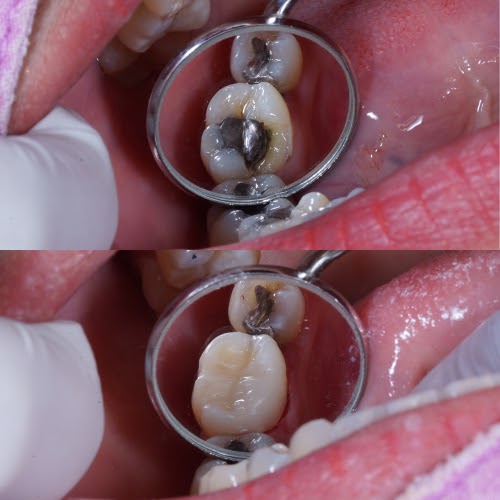
The good news is . . . you can! There are plenty of holistic dentists who would like nothing more than to free you and your body from mercury. However, it must be done very cautiously!
Continue reading for crucial information about how to have those mercury/amalgam fillings removed (and how to make sure your dentist of choice has the right system in place).
Why Mercury Fillings are Bad for Teeth and Your Body
If you have a bottle with a metal lid that won’t open, what do you do? Put the lid under hot water to loosen it. Why do you do that? Because the metal expands when it is heated, and the lid is easier to get off.
The same things happen in reverse. When the metal gets cold it shrinks.
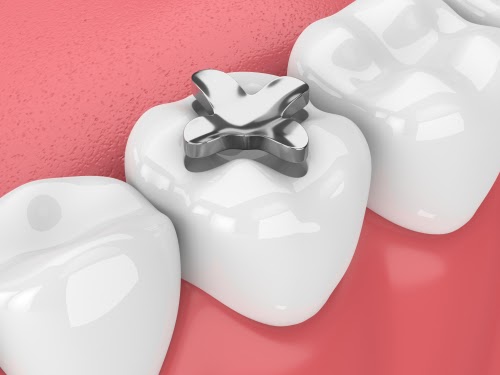
Now imagine a mercury filling in a tooth. The filling was intentionally formed like an upside-down wedge in the tooth, wider at the bottom and narrower at the top. That was done to help the filling stay in your tooth because there is no “glue” under a mercury filling.
Continue imagining that upside-down wedge as you eat dinner tonight. You start the meal with a delicious soup. It’s so hot that you have to blow on each bite. Your metal fillings are expanding with every bite–pushing outward on the walls of the tooth it’s wedged into.
For dessert, you have apple pie with ice cream on top. That ice cream hits the metal filling and it starts to shrink, pulling away from the tooth.

Keep repeating this process over months and years, and eventually, the crystals in the tooth walls will start to crack. A gap will also start forming around the edges of the filling as the filling expands and shrinks.
Bacteria aren’t very big, so they can easily slip into that gap between the tooth and the filling. Can you brush underneath a filling? I don’t think so! This leads to new cavities underneath your old mercury filling.
The Life Span of Mercury Fillings
How often does this shrinking and gap formation happen?
From experience, I can say that 90% of those old fillings have a new cavity underneath . . . and 100% of the teeth have cracks caused by the filling expanding.
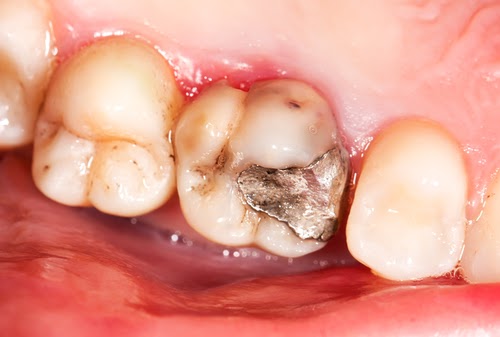
Quite simply, mercury fillings aren’t a permanent fix for a tooth. They have an average life-span of 8-12 years before they crack the tooth and leak bacteria around the gap that forms from expansion and shrinking.
How long have you had your old fillings?
Mercury-Free v.s. Mercury-Safe
Total Care Dental has been a “mercury-free” dental office for many years, but after my health scare due to dental amalgam exposure, my office is now a “mercury-safe” dental office.
Sound the same?
They are not. Let me explain the difference with a story.
When my practice first started growing, I worked to acquire the lease of the dentist in the neighboring building and was assessing what I needed to change before I moved in. He had a 15-year-old carpet in all of his dental treatment rooms.
I realized it was most likely full of mercury and I couldn’t work there until that carpet was replaced with laminate or tile that didn’t retain mercury.
The building owner/dentist said it was fine to keep the carpet because he’d been “mercury-free” for over 14 years now…
I told him I wasn’t worried about the mercury from fillings being placed at the time – but I was worried about all the mercury that had been absorbed into the carpet from fillings.
The dentist had not been “mercury-safe” enough to consider this a legitimate health risk for himself and his patients.

If you don’t visit an intentionally “mercury-safe” dentist, you can be nearly guaranteed that the dentist will not remove the fillings safely, and their environment will also be unsafe to stay around.
It’s not negligence or malpractice that kept them from being mercury-safe…
…rather, it is misinformation and lack of education in the profession of dentistry in general that has caused this ripple effect.
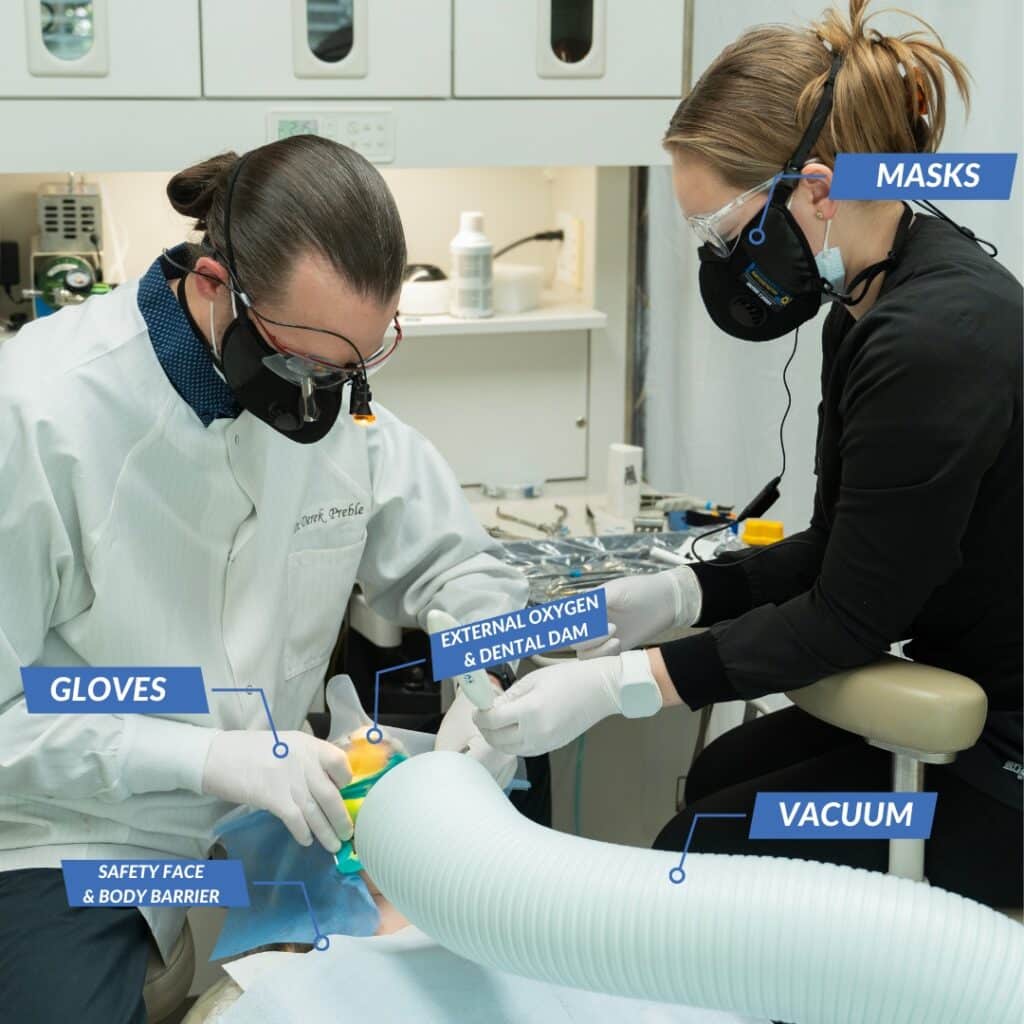
What Does A Mercury-Safe Removal Procedure Look Like?
There is more to safe amalgam filling removal than most realize…
The IAOMT (The International Academy of Oral Medicine & Toxicology) has established the SMART (Safe Mercury Amalgam Removal Technique) as a standard in the industry.
You want a dentist trained in these procedures. DO realize that this training is not available in traditional dental schools. The dentist must also have special equipment as detailed in the procedure steps below:
KEEPING IT COOL–To reduce mercury release, a lot of water is used to keep the filling cool.
ROCKS, NOT PEBBLES–The filling is cut into large chunks, which reduces the amount of drilling.
GET IT ALL OUT–The vacuum must be very strong and placed as close to the tooth as possible. A special device called a Clean-Up is added to the end of the vacuum tip to help hold the particles in place.
TO BREATHE OR NOT TO BREATHE– Avoid breathing through your mouth during the procedure. It is beneficial to have an alternate source of oxygen on your nose and an impermeable barrier such as a gold-coated mask over the nose.
DAM IT– A rubber dam won’t keep vapors out, but it will keep particles out of your mouth. Must be a non-latex, nitrile rubber dam.
CLEAN UP, CLEAN UP– Everything in the area and around the area should be rinsed very well after removal, and the mouth rinsed with a slurry of chlorella or charcoal.
BIG VACUUM– A very large vacuum is placed right below the chin to minimize mercury exposure – both in particulate and vapor form.
COVER IT UP– The dental patient, dentist, dental assistant, and anyone else in the room should have covers for their body, their head, and their face.
What You Need to Know Before and After Dental Amalgam Filling Removal
Removing dental amalgam fillings, even in a safe way, will always produce a temporary increase in a person’s exposure to mercury. You need to understand what that mercury will do in your body and what can help your body remove it post-exposure.
Mercury never exists alone in the body. It attaches to other molecules, particularly ones containing sulfur, like the enzymes glutathione and cysteine. You should increase your levels of glutathione before and after removal by supplementing with liposomal glutathione.
There are a few excellent things you can do with your diet in preparation for mercury removal as well.
Increase sulfur-based foods, including vegetables from the cruciferous family (cabbage, garlic, broccoli, cauliflower, kale, collards, radishes, wasabi, etc.), which are rich in sulfur. Fermenting these vegetables is the most nutritious way to consume them.
Garlic is especially powerful, but it’s the oil of the garlic in particular that supports detoxification. Either eat garlic raw by chewing it up or purchase a garlic oil supplement.
Chlorella is a binder that grabs mercury and helps remove it from the body. Other binders you’ll hear about are clay/zeolites, and pectin. For the kind of mercury found in dental fillings, these bind very weakly, and you would have to take enormous quantities for many years to have much effect, so I don’t recommend them.
There are other detox products you can use, but everything should be regulated by your alternative care health provider.
Your body cannot handle an increase of these detox substances over the long term, so the treatment should be pulsed – five days on, two days off (to start), working up to ten days on, four days off. If you begin to feel worse, you may be detoxing too quickly.
The body should have the excretory pathways prepared for an increase in mercury after removal as well. The pathways utilized are the kidneys, liver, and colon, particularly kidneys for mercury from fillings.
There are many resources online where you can learn more about mercury fillings. Talk to your holistic health care practitioner about whether removal is something they recommend for you.

